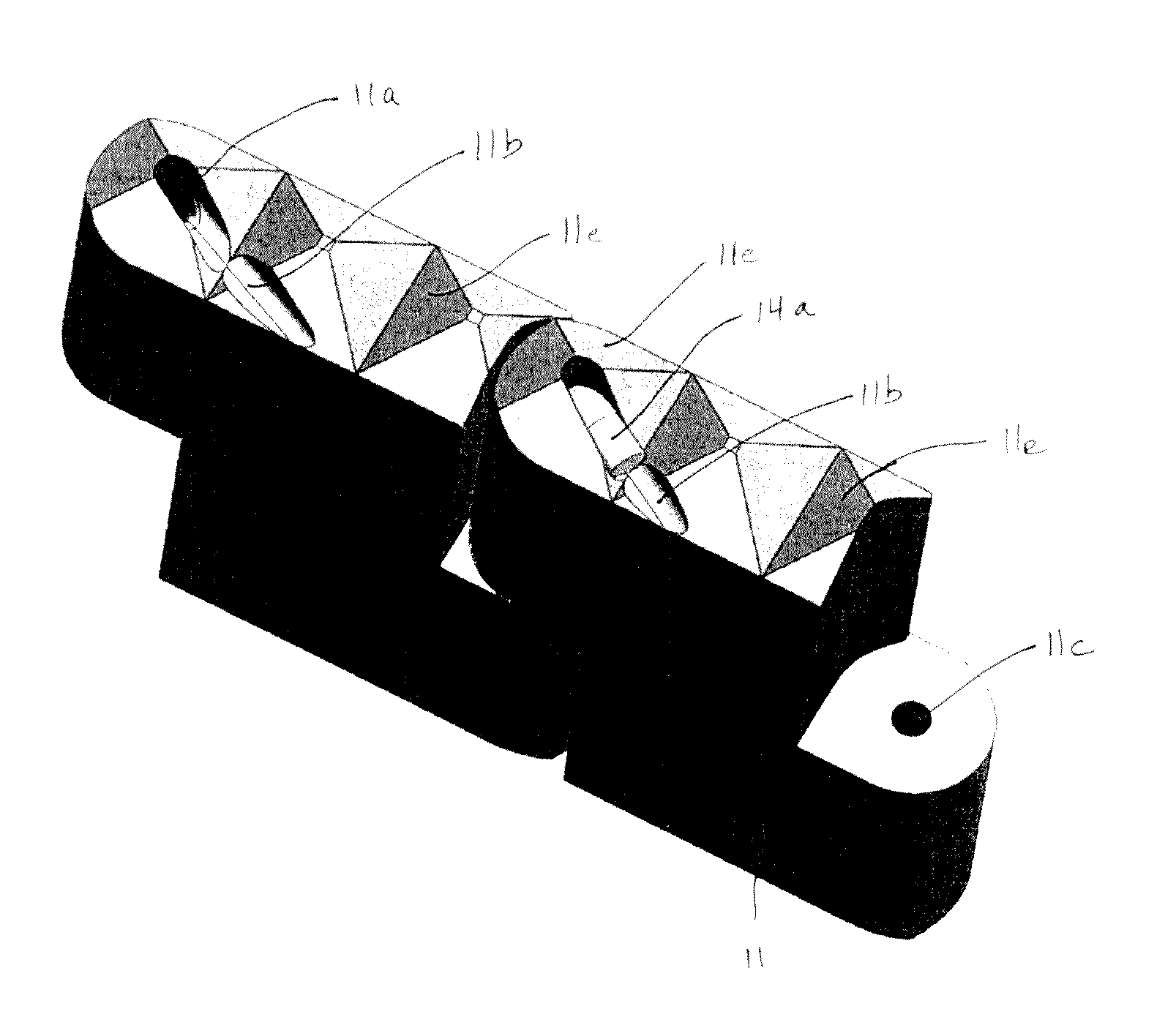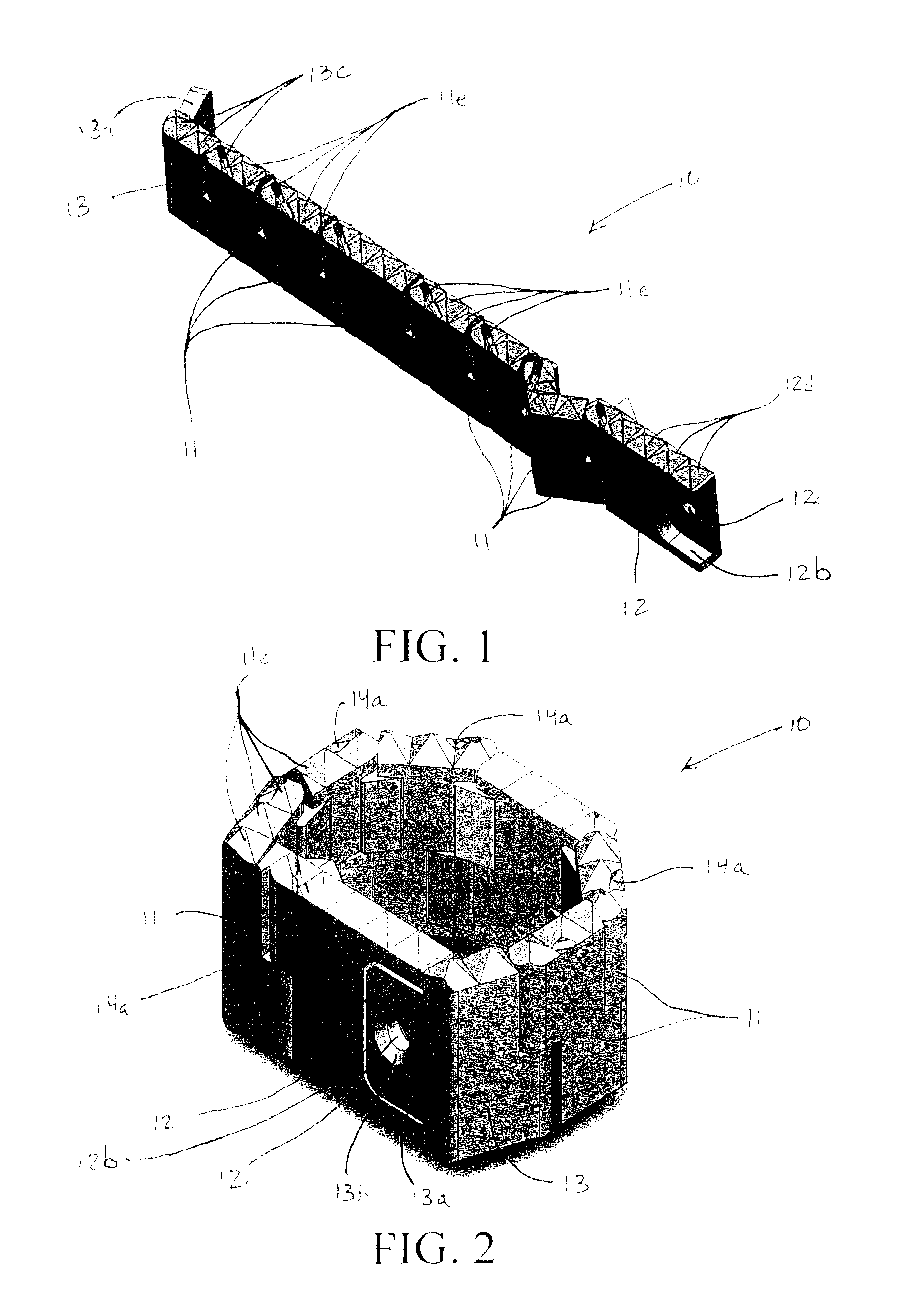Expandable inter-vertebral cage and method of installing same
a technology of intervertebral cage and extension, which is applied in the field of spine diseases, can solve the problems of increasing the risk of complications and infection, increasing the risk of torsion stress on the hinge elements, and requiring a large incision, so as to reduce the number of potential complications and ensure optimal placement in the intervertebral space
- Summary
- Abstract
- Description
- Claims
- Application Information
AI Technical Summary
Benefits of technology
Problems solved by technology
Method used
Image
Examples
Embodiment Construction
[0038]Referring now to the drawings, there is illustrated in FIGS. 1 through 3 a first embodiment of an inter-vertebral cage, indicated generally at 10, in accordance with this invention. In FIG. 1, the inter-vertebral cage 10 is shown in an initial extended orientation for insertion into a space provided within an inter-vertebral disc that is disposed between two vertebrae of a spine in a manner that will be described in detail below. Following such insertion, the inter-vertebral cage 10 can be moved from this initial extended orientation to a final installed orientation (illustrated in FIG. 2) for use. The manner in which the. cage 10 is moved from the initial extended orientation to the final installed orientation will be explained in detail below.
[0039]The first embodiment of the inter-vertebral cage 10 includes a plurality of individual cage sections 11, a first end section 12, and a second end section 13. In the illustrated embodiment, the inter-vertebral cage 10 includes six ...
PUM
| Property | Measurement | Unit |
|---|---|---|
| height | aaaaa | aaaaa |
| angle | aaaaa | aaaaa |
| vertical height | aaaaa | aaaaa |
Abstract
Description
Claims
Application Information
 Login to View More
Login to View More - Generate Ideas
- Intellectual Property
- Life Sciences
- Materials
- Tech Scout
- Unparalleled Data Quality
- Higher Quality Content
- 60% Fewer Hallucinations
Browse by: Latest US Patents, China's latest patents, Technical Efficacy Thesaurus, Application Domain, Technology Topic, Popular Technical Reports.
© 2025 PatSnap. All rights reserved.Legal|Privacy policy|Modern Slavery Act Transparency Statement|Sitemap|About US| Contact US: help@patsnap.com



